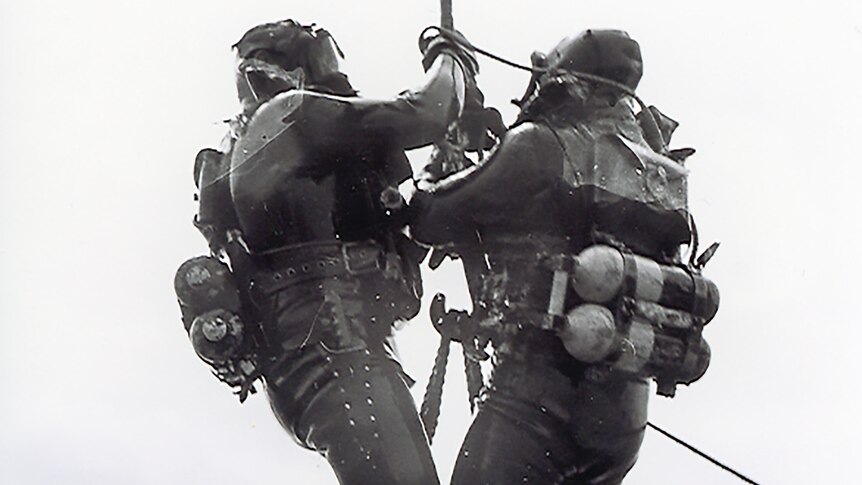10/06/2021 Australia
“If you ever come across anything suspicious like this item, please do not pick it up, contact your local law enforcement agency for assistance”
ABC Eyre Penisolare / Di Jodie Hamilton
In the late 1960s, Neil Williams was diving for abalone and seashells off Taylor Island, near South Australia’s Port Lincoln, when he discovered a haul of World War II ammunitions.
But it would take almost 50 years to pinpoint how the live fuses and mortars came to be anywhere near Port Lincoln, thousands of kilometres from any war action. The story of the find is being told as part of community talks at the Port Lincoln RSL to commemorate the 110th anniversary of the Australian Navy this year. Ammunitions collector Peter Wyschnja, who researched the origin of the dumped weapons, and former navy diver Tom McNab, who helped recover them and photographed the operation, retold the story of the abalone diver’s find.
Different kind of shells
Mr Williams, now 84 and retired in Queensland, was diving at a depth of around 25 metres in the Passage between Taylor Island and the mainland when he discovered an unusual reef on the flat, limestone bottom. “I pushed this rock over to see if there were any seashells underneath, because you could get $100 for a seashell and [this] sort of rust came out from the bottom of it,” Mr Williams said. “It was strange and, as soon as the current took the rust away, I could see all these bombs stacked.” He took one back to Port Lincoln to the local army depot. “[The sergeant] came out to have a look at it and nearly had a fit,” Mr Williams said. “I just came home in the boat and had the thing sitting in a side pocket.
“I didn’t realise that it could have been dangerous.”
Mr Wyschnja said 25 tonnes of ordnance components had been dumped there, and some were almost all solid brass. “The story had got out and, suddenly, there was quite a few abalone divers going down there salvaging some of this stuff,” Mr Wyschnja said. “Being enterprising people at the time, they realised there was a bit of money involved in scrap brass.”
Foto-Fonte: abc.net.au
If you find anything that appears to be an explosive device, do not touch it, leave it where it is and call the police. We will contact the appropriate agencies to properly dispose of the item.





